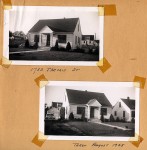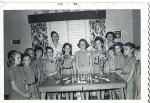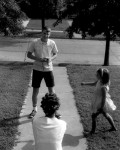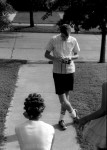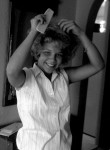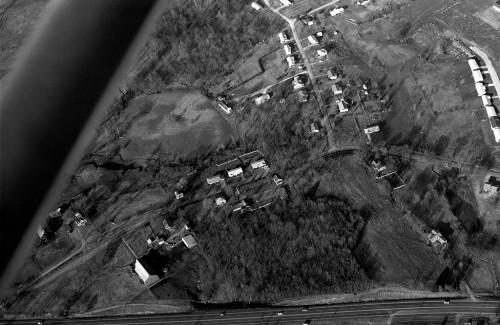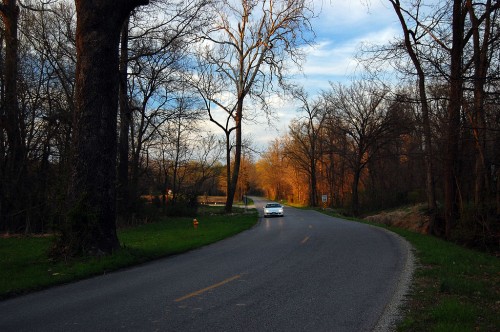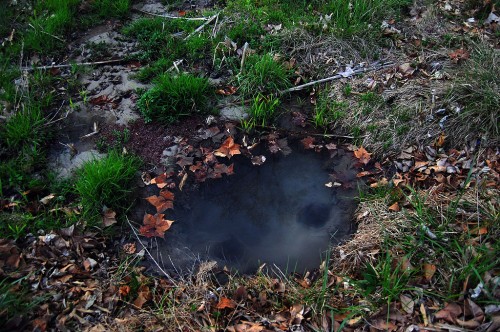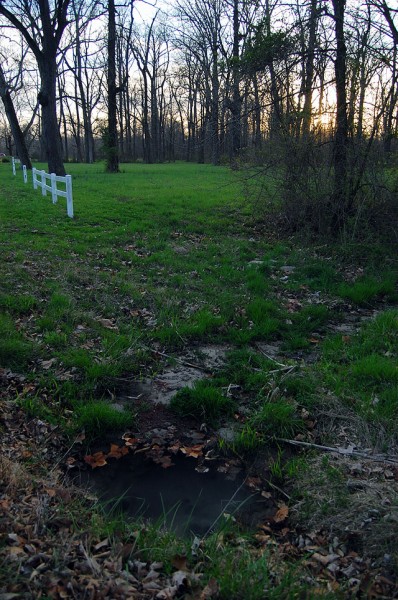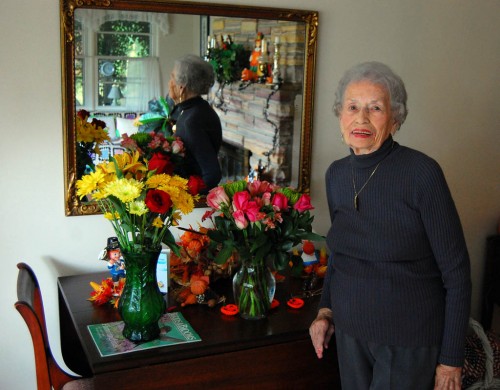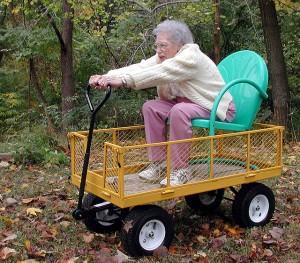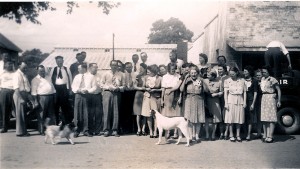After we had finished touring Central High School, Linda Stone said she’d like to walk up on sit on the steps of the house where she grew up, “where Jim Stone and I played chess.” Tricia Tipton and I followed her on a walk down memory lane.
We lived at 1753 Themis when I was two years old
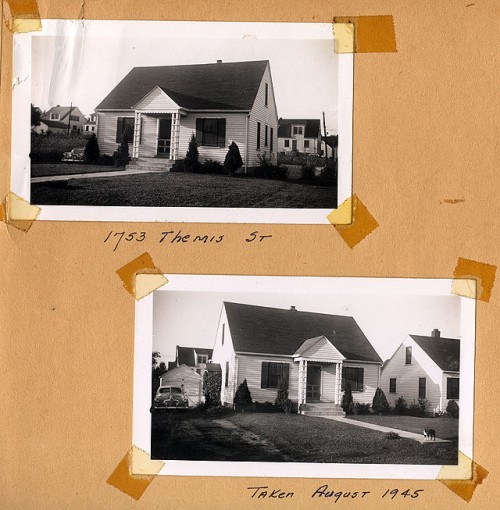 She didn’t know that I lived in one of the first houses on Themis Street when I was about 2 years old. Mother often talks about how the site CHS sits on was once a swampy field with a dead horse in it. The house to the east of us, occupied later by the Ravenstein family, was a low spot that had to be filled in before it could be built on.
She didn’t know that I lived in one of the first houses on Themis Street when I was about 2 years old. Mother often talks about how the site CHS sits on was once a swampy field with a dead horse in it. The house to the east of us, occupied later by the Ravenstein family, was a low spot that had to be filled in before it could be built on.
“I played chess with Jim Stone”
Linda reminisces about playing chess with Jim Stone, who lived across the street from her. She and Tricia Tipton list off all the CHS students who lived on the street. Central was the epitome of a neighborhood school.
In an earlier email message, she wrote, “Our neighborhood was filled with kids exactly our age, so all summer a huge gang of us would play hide-and-seek until well after dark. My first-ever real date was with him (Jim) — summer of ’63, I think. I still remember scrambling to find a proper little summer dress to wear. It was a borrowed rust and tan plaid sundress. Vivid, colorful memories! He and I did not really date, we usually sat on the front porch and talked or went over to his house and looked at his home-made science lab with all his projects. Lots of fun.”
“Everybody on our block went to Central”
On my side of the street, Ronnie Marshall (’65) next door. The other side of our house next door and up the street: Sitz, Nowell, Early, Estes, ?, Goddard (the principal), then Garmes. Then across the street at the top of the hill and down toward the high school: Mulkey, Kies, Dunklin, Stone (Jim), Young (Debby), Lueders (the photographer plus Dickie and Holly (’67), Amlingmeyer. I know I am missing some.
Linda, Tricia and Jim circa 1964
One afternoon when I stopped by Jim Stone’s house, we noticed Linda and Tricia out in Linda’s front yard at 1744 Themis.
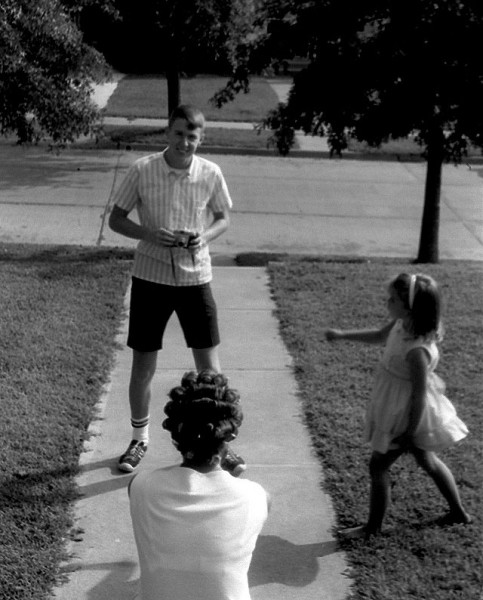 I can’t believe that Linda and Tricia let two guys with cameras get anywhere close to them while they were working on making themselves (more) beautiful. That’s Linda’s sister, Lisa, walking into the frame from the right.
I can’t believe that Linda and Tricia let two guys with cameras get anywhere close to them while they were working on making themselves (more) beautiful. That’s Linda’s sister, Lisa, walking into the frame from the right.
Tricia’s inside attacking her hair
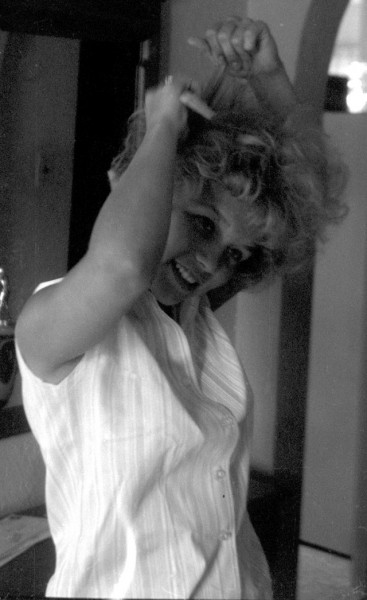 I have no idea what’s she’s doing. It looks painful. I am, to this day, amazed that I was able to shoot this sequence and live. The girls must have been sedated on some kind of hair goop at the time.
I have no idea what’s she’s doing. It looks painful. I am, to this day, amazed that I was able to shoot this sequence and live. The girls must have been sedated on some kind of hair goop at the time.
The result wasn’t bad
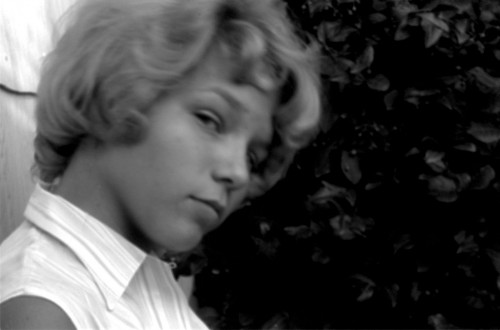 Linda went digging for her past
Linda went digging for her past
Linda wrote, “In prep for attending the reunion I’m digging through boxes that have moved with me from Cape to St. Louis, Dallas, Nashville, Atlanta, Dothan (AL), Coeur d’Alene (ID), Scottsdale and Durango. And that includes more than one house in St. Louis, Dallas, Atlanta and Scottsdale.”
Brownie Troop 3
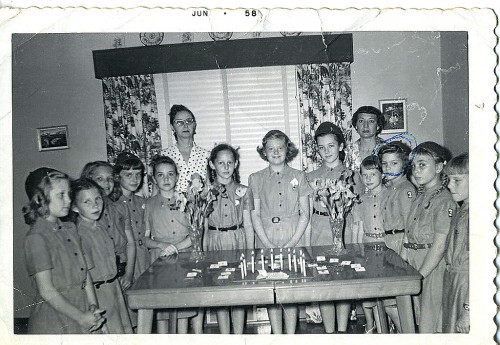 This picture is Brownie Troop 3 at some kind of ‘flying up’ ceremony which was held in my home at 1744 Themis St. in 1958. The girls are all from the future class of 1966. Left to right: __?__, Martha Penrod, Tricia Tipton, Pam Burkhimer, Mary Frances Sitze, Mrs. Sitze, Debby Young, Sally Bierbaum, Marsha Hitt, Mrs. Lolita Stone, Marilyn Maevers, Linda Stone (circled in ink), Prudy Irvin, Mary Lynn Nowell.
This picture is Brownie Troop 3 at some kind of ‘flying up’ ceremony which was held in my home at 1744 Themis St. in 1958. The girls are all from the future class of 1966. Left to right: __?__, Martha Penrod, Tricia Tipton, Pam Burkhimer, Mary Frances Sitze, Mrs. Sitze, Debby Young, Sally Bierbaum, Marsha Hitt, Mrs. Lolita Stone, Marilyn Maevers, Linda Stone (circled in ink), Prudy Irvin, Mary Lynn Nowell.
Birthday babes on Themis
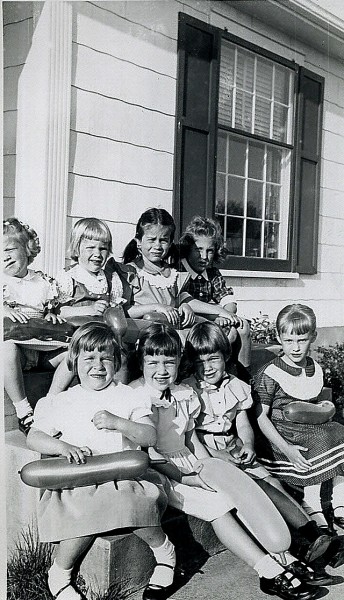 This photo was taken in front of the house that was in the video. Linda wrote, “Bottom row: Jane Dunklin, Mary Frances Sitze, Linda Lou Stone, Joan Early. Top row: Mary Lynn Nowell, Sally Ann Stone, Judy Dunklin, Joan Amlingmeyer. I recognize the dress as my Easter outfit that my mother sewed for me. Since Sally’s birthday is in April and this was taken on our front porch, it might have been a party for her.”
This photo was taken in front of the house that was in the video. Linda wrote, “Bottom row: Jane Dunklin, Mary Frances Sitze, Linda Lou Stone, Joan Early. Top row: Mary Lynn Nowell, Sally Ann Stone, Judy Dunklin, Joan Amlingmeyer. I recognize the dress as my Easter outfit that my mother sewed for me. Since Sally’s birthday is in April and this was taken on our front porch, it might have been a party for her.”
Boomer Birthday Party
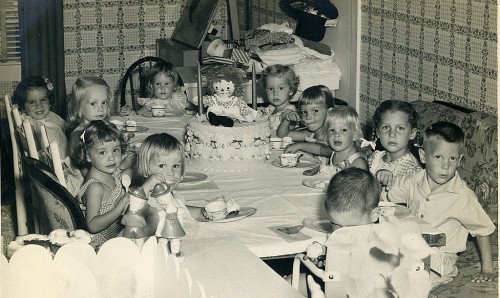 It is a birthday party for Holly Lueders, who lived directly across the street from us (in the the home that Debby Young later occupied). These are all future graduates from the classes of 1965, ’66 and ’67. Baby boomers blooming on Themis. From the bottom and proceeding clockwise: Dickie Lueders (hiding his face), Jane Dunklin, Mary Frances Sitze, Joan Early, Judy Dunklin, Holly Lueders, Mary Lynn Nowell, Linda Stone (spoon in mouth), Sally Stone, Joan Amlingmeyer, John Amlingmeyer.
It is a birthday party for Holly Lueders, who lived directly across the street from us (in the the home that Debby Young later occupied). These are all future graduates from the classes of 1965, ’66 and ’67. Baby boomers blooming on Themis. From the bottom and proceeding clockwise: Dickie Lueders (hiding his face), Jane Dunklin, Mary Frances Sitze, Joan Early, Judy Dunklin, Holly Lueders, Mary Lynn Nowell, Linda Stone (spoon in mouth), Sally Stone, Joan Amlingmeyer, John Amlingmeyer.
Themis Street Photo Gallery
There are a few shots not shown above. Click on any image to make it larger, then click on the left of right side of the photo to move through the gallery.

